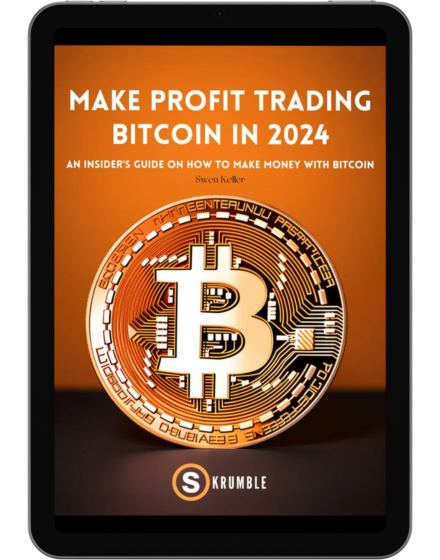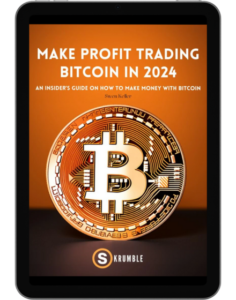How to Stake on Binance: Complete Guide
Swen Keller
For this tutorial, we’ll use the Binance exchange mobile app for all staking options.
Let’s get started.
Staking
To begin the locked staking process open the Binance exchange app and sign in. Next, on the home screen, select More, then scroll down to the Finance icon and tap on Staking.


You’ll see 2 options Staking and DeFi Staking. For now, we’ll focus on Staking.
On the screen you should see the coin at the upper right, the staking rewards to be expected, its own minimum locked amount needed, interest calculation, and then the lock-up time which can be 30, 60, or 90 days.

In most cases, the interest rate will vary between 30 to 90 days depending on the coin you intend to stake. In some instances, the coin subscription can be sold out. So if that’s the case you’ll have to wait for some time in the future when the coin’s staking is available. This is dependent on the number of users staking the coin at Binance per subscription period.
Now to find what coins are available generally, hit search on the locked staking page and you’ll see all cryptocurrencies listed in alphabetical order. If you want to stake a coin you’ll need to hold it in your spot account on Binance.
So to start the staking process, pick a coin from the list you’re currently holding in your spot wallet. After choosing the particular coin, the next screen you’ll see will show you the interest rate based on the lock-in period (90, 60, or 60 days). It’s important to note that some lock-in periods may be occupied by other stakers so if you aren’t able to stake for 90 days, for example, you can simply choose 60 or 30 days.
On the next screen, you can select the amount of the coin you want to stake. Each coin has its specific minimum and maximum for staking which will be listed on this screen.

Next, scroll down to the summary, which will allow you to review staking parameters by showing you the stake date, value date, and redemption date. That said, there’s a rollover period of what constitutes a day, so if you can stake in a Tuesday, it’ll start the next day. If you want complete interest on your staked BNB, for example, your coins must be locked up for the entire lock-in period.
However, if you want to pull out your coins early, it is possible but you’ll need about 2 days to get them back and you won’t get any interest. All interest earned will be forfeited.
To withdraw, go to the home screen then select the wallet, then earn. Next, scroll down and pick the coin you staked. Then tap redeem.
You’ll see a warning that states redeeming in advance will cause a loss of interest. Confirm and hit redeem. You’ll need to go to your history to see when it’ll be unlocked, usually between 2 to 3 days. To do so, go to “wallet”, then “Earn”. At the upper right of your screen, there’ll be an icon for history.
Binance DeFi Staking
Now with DeFi staking, you are sending your coins to a defined mining project and that’s the risk. If your coins are lost Binance won’t be responsible, so you’ll see a warning before staking your coins with the DeFi option.
Here’s what to do to stake with DeFi Staking. Go to your home screen, choose more, scroll down to Finance and select Staking. At the top right, you’ll see DeFi Staking, select it. You should see the risk warning previously mentioned.

Next, minimize the warning and you’ll see which coins, interest rates, and protocols Binance offers with its DeFi Staking option.
You can use the search option to see a list of the available coins in alphabetical order. Some coins available for staking here post flexible interest rates.
To start, choose the coin you want to stake.

You’ll see a screen showing you the minimum and maximum amount of coins you can stake.

The next screen should be a summary showing you the interest rates.
Again, you’ll see the lock-in periods which are 30, 60, or 90. Trying to withdraw coins before your chosen lock-in period will also take 2 to 3 days before redemption as well as causing a loss of the interest gained.
ETH 2.0
From your home screen, select more, scroll down to finance, and select ETH 2.0. With Binance, you’ll earn interest on ETH 2.0 daily.

When you stake your ETH, it’ll change to BETH (Beacon Ethereum) and represent your ETH 2.0 stake.

However, you’ll be unable to change it back. Also, your staked ETH will be locked-in for the first phase of the Ethereum 2.0 upgrade project and cannot be redeemed during the lockup period.
If you want to convert your BETH back to Ethereum you can do so by trading in Binance as it is a tokenized asset.
You’ll be able to redeem your staked ETH after the first phase of the ETH 2.0 upgrade is completed, which is expected to take up to 24 months from 2021. Also, BETH represents your staked ETH on a 1:1 basis.
After converting the Ethereum to BETH, it (BETH) should reflect in your Binance spot wallet. However, if you trade your BETH to Ethereum before the completion of the Ethereum 2.0 upgrade it won’t be at the 1:1 ratio.
Conclusion
Binance offers 3 forms of staking and all options follow the same steps making it an easy option to stake your coins and tokens. However, there are risks involved in staking and you can lose your entire funds if things go wrong. So only invest money you’re willing to lose.
FAQ
Most frequent questions and answers
Yes, Binance lets you stake over 100 cryptocurrencies at no cost.
Just like any crypto investment staking has a high risk of loss – most often impermanent loss. If the price of the crypto asset you staked drops, the decrease in the price can outweigh any interest you may earn. Staking and unstaking periods can also cause liquidity problems for users.
Also, crypto assets staked in both centralized and decentralized exchanges can be hacked and stolen. If the exchange goes out of business, staked assets will be lost. Furthermore, if you are using a delegated proof-of-stake system, your staked assets can be slashed if the designated validator misbehaves.
Considering the risks associated with staking, it is best you only stake money you can lose.
Staking cryptocurrencies gives you returns that exceed what you can earn from holding your assets or leaving them in a savings account.
Yes, you can lose staked crypto to slashing. Slashing involves destroying some of the Stakes on the network. This method is used to punish network validators who take improper actions or misbehave. The major behaviours that trigger slashing are downtime and double signing.
Yes, Binance supports the staking of Shiba Inu.
While BNB staking is safe, you should do so with a trusted validator to minimize the risks of losing your investment to slashing.
Staking crypto assets on Binance reduces the risks of wallet attacks, thefts, and scams. Also, Binance takes all the slashing risks for users. This means that Binance will return the exact amount of token stakes to the user if a validator is penalized.
Binance is however not liable for any losses incurred as a result of their staking investment choices.
Binance offers up to 10.00% rewards on locked assets. However, Binance users have no right to staking rewards until the reward has been received by Binance. Binance also does not guarantee that users will receive any staking return or specific staking reward over time.
Binance users can get up to 200.00% APY. APY is the estimated reward a user can earn on staked assets over a specified time frame. APY is adjusted daily and the estimated reward can differ from the actual reward generated at the end of the staking period. Binance does not display the predicted or actual yield/returns in any fiat currency.
Binance does not guarantee users that they will receive any specific reward on staked crypto assets.
Yes, you can stake on the Binance mobile app.
Binance Earn allows users to save and grow the value of their crypto assets without any effort or in-depth knowledge. Binance users can generate income through different avenues like launch pool, flexible savings, locked savings, locked staking, activities, Binance liquid swap, dual investment, and BNB Vault. With Binance earn, users can go beyond HODLing to generate passive income.
Binance Staking, on the other hand, allows users to lock up the tokens on the platform for a set period to earn rewards.
You can earn up to 10% or more on staking. How much you earn in reward cannot be guaranteed as staked tokens are subject to certain staking risks and can depreciate.
It takes about 48 to 72 hours for locked tokens to be credited to the user’s spot wallet.
To stake crypto, you need to own a cryptocurrency that uses the Proof-of-Stake. Staked cryptocurrencies are still in the possession of the owner but they cannot be accessed or withdrawn for the duration of the staking period.
When a user stakes his cryptocurrencies, the staked coins are automatically pledged to the cryptocurrency protocol. The protocol chooses users who stake the largest amount of cryptocurrencies to become validators who will confirm blocks of transactions. When a block is added to the blockchain, new cryptocurrencies are minted and distributed as rewards to the block’s validator.
To stake cryptocurrencies, you need to first buy the cryptocurrency and transfer the crypto to a blockchain wallet. After this, you can join a staking pool. A staking pool is made up of crypto traders who combine their funds to increase their chances of earning staking rewards.
A staking pool is a trusted server node that maintains and holds the combined stake or various stakeholders in a single entity. Staking pools use multiple proof-of-stake validators in one pool to increase the staking rewards earned.
Cold staking is the type of staking that store’s assets offline in a hardware wallet. Companies like Coinomi, Callisto, and Binance support cold staking.
Cold staking is more secure than online staking as hardware wallets are less susceptible to cyber-attacks.
Not all cryptocurrencies can be staked, only cryptocurrencies that use the proof-of-stake model can be staked. Most cryptocurrencies use the Proof-of-Work model to add new blocks to their blockchain.
Skrumble.com provides all its content for informational purposes only, and this should not be taken as financial advice to buy, trade, or sell any investment instruments or products, including but not limited to cryptocurrencies, or use any specific exchange. Please do not use this website as investment advice, financial advice, or legal advice, and each individual’s needs may vary from that of the author. Investing in financial instruments, including cryptocurrencies, carries a high risk and is not suitable for all investors. It is possible to lose the entire initial investment, so do not invest what you cannot afford to lose. We strongly advise conducting your own research before making any investment decisions. This post includes affiliate links with our partners who may compensate us.
To view our privacy policy read here.






